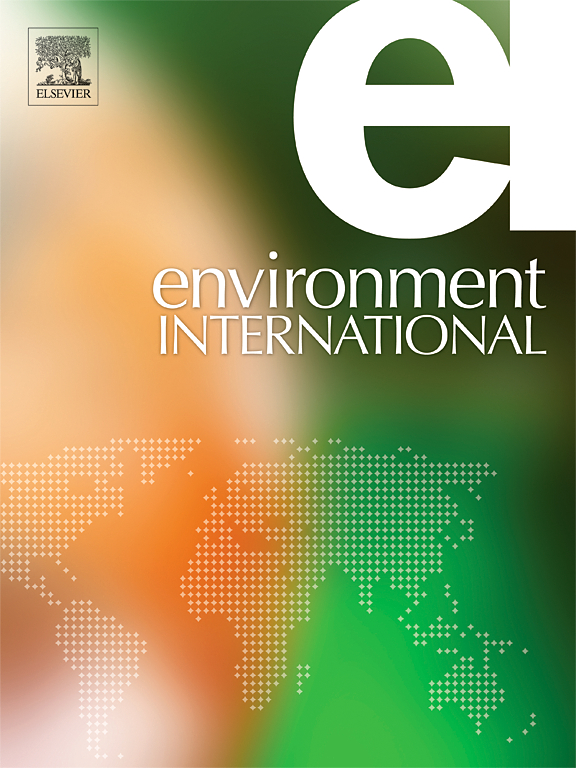Identification of VOC emission hotspots in industrial parks by high-spatiotemporal-resolution sensor networks
IF 9.7
1区 环境科学与生态学
Q1 ENVIRONMENTAL SCIENCES
引用次数: 0
Abstract
Industrial emissions are a significant contributor to volatile organic compound (VOC) pollution. However, timely and accurate tracking of high-emitting plants within industrial parks remains a challenge. Here, we deployed three high-density VOC sensor networks across a package printing industrial park (103 sites/km2), a fine chemical industrial park (8.57 sites/km2), and an urban area in central China. These networks enabled the identification of VOC pollution characteristics and sources in regions. The hourly average VOC concentrations in the package printing industrial park (320 ± 262 ppb) and the fine chemical industrial park (155 ± 62 ppb) were 1.62 to 2.75 times and 1.27 to 1.70 times higher compared to the urban area. Pollution levels in these two industrial parks were more severe than other reported industrial parks, primarily due to the higher VOC emission factors or higher VOC emission fluxes associated with these industries. Importantly, by integrating VOC concentration contour maps with meteorological data, major polluting plants in the package printing industrial park and the fine chemical industrial park were identified. These were further validated through downwind tracing of VOC species using gas chromatography-mass spectrometry. The results highlight that a VOC sensor network is an effective tool for real-time monitoring of VOC variations and the precise identification of high-pollution plants across various industrial parks, which can provide valuable insights for the refined control and management of VOC pollution emissions.


基于高时空分辨率传感器网络的工业园区VOC排放热点识别
工业排放是挥发性有机化合物(VOC)污染的重要来源。然而,及时准确地跟踪工业园区内的高排放工厂仍然是一个挑战。在这里,我们在中国中部的一个包装印刷产业园(103个站点/平方公里)、一个精细化工产业园(8.57个站点/平方公里)和一个城区部署了三个高密度VOC传感器网络。这些网络能够识别这些地区的VOC污染特征和来源。包装印刷产业园(320 ± 262 ppb)和精细化工产业园(155 ± 62 ppb)的VOC平均浓度分别是市区的1.62 ~ 2.75倍和1.27 ~ 1.70倍。这两个工业园区的污染水平比其他工业园区更为严重,主要是由于与这些工业相关的VOC排放系数或VOC排放通量较高。重要的是,通过将VOC浓度等高线图与气象数据相结合,确定了包装印刷产业园和精细化工产业园的三个主要污染工厂。这些发现通过使用气相色谱-质谱法顺风追踪VOC物种进一步得到验证。这些结果表明,VOC传感器网络是实时监测VOC变化和精确识别各个工业园区高污染工厂的有效工具。这种方法可以为控制和管理挥发性有机化合物污染提供宝贵的见解。
本文章由计算机程序翻译,如有差异,请以英文原文为准。
求助全文
约1分钟内获得全文
求助全文
来源期刊

Environment International
环境科学-环境科学
CiteScore
21.90
自引率
3.40%
发文量
734
审稿时长
2.8 months
期刊介绍:
Environmental Health publishes manuscripts focusing on critical aspects of environmental and occupational medicine, including studies in toxicology and epidemiology, to illuminate the human health implications of exposure to environmental hazards. The journal adopts an open-access model and practices open peer review.
It caters to scientists and practitioners across all environmental science domains, directly or indirectly impacting human health and well-being. With a commitment to enhancing the prevention of environmentally-related health risks, Environmental Health serves as a public health journal for the community and scientists engaged in matters of public health significance concerning the environment.
 求助内容:
求助内容: 应助结果提醒方式:
应助结果提醒方式:


